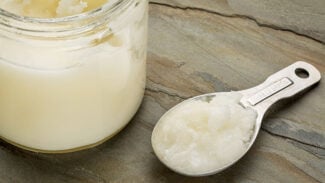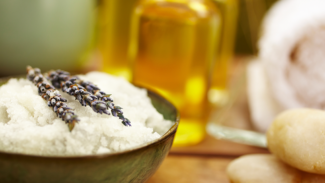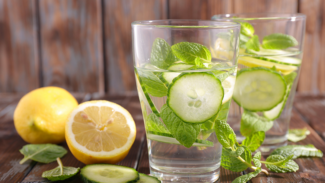Hiya Smarties!
Check out this super informative guest article by Brenda Davis, RD from my blog archives. If you or someone you know wants the full scoop on coconut oil, read on! Take it away, Brenda…
There are few foods that have been at once maligned and acclaimed as much as coconut oil. Some view it as a notorious health villain because it’s the most concentrated source of saturated fat in the diet – even higher than butter or lard. Not surprisingly, it rests at the very top of the list of foods that must be strictly avoided in many heart-healthy diet programs. At the other end of the spectrum are people who view coconut oil as a fountain of youth and the greatest health discovery in decades. These advocates claim that coconut oil can provide therapeutic benefits for cancer, diabetes, digestive disturbances, heart disease, high blood pressure, HIV, kidney disease, osteoporosis and overweight. So what is the truth? Is coconut oil a menace or a miracle where health is concerned?
The primary criticism of coconut oil is that over 90 percent of its fat is saturated. Saturated fat is known to increase blood cholesterol levels. When coconut oil is blacklisted, it’s almost exclusively because of this extreme saturated-fat content. While many people imagine saturated fat as a single tyrant that clogs arteries, there are actually several different types of saturated fats. These fats contain between four and 28 carbons. Depending on the length of their carbon chain, they have very different effects on blood cholesterol levels. These saturated fats, listed with foods that include them, are most plentiful in the diet:
- Lauric acid (12 carbons): coconut, coconut oil, palm kernel oil
- Myristic acid (14 carbons): coconut, dairy products, nutmeg oil, palm kernel oil, palm oil
- Palmitic acid (16 carbons): animal fats, palm oil
- Stearic acid (18 carbons): beef, butter, cocoa butter, lard, mutton
Saturated fatty acids with 12–16 carbons increase blood cholesterol levels, while stearic acid does not. When stearic acid reaches the liver, it’s converted to oleic acid (an 18-carbon monounsaturated fat), which may help explain why it doesn’t raise cholesterol. As a result, consumers are often advised not to be concerned about their intake of stearic acid. However, cholesterol is not the only marker for heart disease, and adverse effects of stearic acid have been reported. In one large study, stearic acid increased coronary artery disease risk more than lauric, myristic or palmitic acid.1 Stearic acid may reduce good HDL cholesterol, increase Lp(a), which is another risk factor for heart disease, increase certain blood-clotting factors and result in lipemia (excess fat in the blood) after eating.2, 3 In a critical review of dietary fats and coronary artery disease, the authors advised that stearic acid not be distinguished from other saturated fats when providing dietary advice to reduce coronary artery disease.2
Coconut oil is about 50 percent lauric acid, 18 percent myristic acid and 8 percent palmitic acid. This adds up to 76 percent of the fat in coconut oil being the kind that raises cholesterol. Case closed? Not exactly. The predominant fat, lauric acid, does raise total cholesterol, but it appears to raise good HDL cholesterol to an even greater extent than bad LDL cholesterol. The effect on the ratio of total to HDL cholesterol is consistently favorable.4, 5, 6 Myristic and palmitic acid do not have this effect. Does the 50 percent lauric acid in coconut oil cancel out the 26 percent myristic and palmitic acids? We don’t know.
Fats rich in lauric acid, such as coconut oil, result in more favorable blood cholesterol levels than hydrogenated vegetable oils laden with trans fats.4 Trans fatty acids raise bad LDL cholesterol and decrease good HDL cholesterol. Coronary artery disease risk is reduced most effectively when trans fatty acids and saturated fatty acids are replaced with unsaturated fatty acids.2 The effect of coconut oil, rich in lauric acid, remains somewhat uncertain. However, in many parts of the world where coconut and coconut oil are staples in indigenous diets, rates of chronic disease, including coronary artery disease, are low.7, 8, 9 There is one major caveat. The benefits apply only when coconut products are consumed along with a diet that is unprocessed and rich in high-fiber plant foods. When the indigenous diet gives way to a more processed, Western-style diet laden with white flour, sugar and fatty animal products, disease rates escalate even when coconut continues to be consumed.
Most of the fatty acids in coconut, particularly lauric acid, have significant antimicrobial properties.10, 11, 12, 13 Virgin coconut oil also contains a variety of protective phytochemicals, including phenolic acids, which are largely eliminated through the refining process.14, 15
Another important attribute of coconut fat is its stability. It is so highly saturated that it is not easily oxidized or otherwise damaged.16 Plant foods that grow close to the equator have a higher quantity of saturated fatty acids to protect themselves from the ravages of oxidation that occurs in warm temperatures. Foods that grow in cold climates generally contain higher amounts of unsaturated fats such as omega-3 fatty acids. This is necessary for the survival of the plant and its seeds; certain fluids in the plant need to remain liquid, even in very cold temperatures. The saturated fat that comes from whole plant foods, such as coconut, may be of benefit for vegans. Vegan diets sometimes contain excessive amounts of unsaturated fats, which are more prone to oxidation, while the saturated fats in coconut are stable fats with a low risk of oxidation. While we want to keep our total intake of saturated fat low, we don’t want to completely eliminate it (impossible on any diet).









Excellent common sense advice! Everything in it’s most natural whole, state, and in moderation.
What about coconut butter which is made entirely from the coconut meat?
Thank you. This is very helpful. I am often asked about coconut oil and had it highly recommended for me when I was diagnosed with MS. I was skeptical. This article clears some things up for me. As always, everything in moderation.
Interesting and informative. I have a jar of coconut oil in my cupboard and I’ve been too afraid to open it, as I consume a low-fat raw vegan diet. I’m not sure I will open it any time soon! I think I’ll stick to getting my fats from whole foods, like maybe some coconut meat instead?
I use coconut oil to cook for special occasions. However, I use it daily as a skin moisturizer and put a light amount in my hair after I shampoo…works better than any conditioner I have ever tried. I also put it in my hair before I go swimming… protects it from the chlorine or salt.
Thanks for this post. As an avid health store shopper I am always aware of these new fads, but never really sure what to make of them. Coconut a case in point. I appreciate the write up! I think I will leave it in my cupboard, most of the time, too.
🙂
Jen
This still sounds like it’s dissing coconut. I would vote for coconut butter (from Artisana) or whole coconut over straight oil any day. A low-fat vegan diet is detrimental to health. Any low-fat diet is. I would like to see some commentary or an article on that, perhaps!
For the record I don’t lean too hard to either end of the spectrum, I just still feel that coconut is getting a negative edge here, but that’s me personally and my own interpretation of it. And there’s obviously a huge difference to populations that eat whole coconuts versus the fractionated foods we commonly use.
love coconut oil on all my grains & yams! yummmmeeee!
Beyond the health of coconut oil there is the farming practices of it which often puts rain forests in danger. Orangutans being one of the large species being negatively effected by the production of coconuts for the coconut oil. RAN, the Rainforest Action Network has a lot of information.
Thank you for clearing that up! I’ve been wondering about coconut oil!
Thanks Brenda – nice post. Love your book, it’s a great resource for vegans and one of books I recommend on my blog.
Thank you so much for your comments. I forgot to mention that one of my favorite uses for coconut oil is as a moisturizer. I mix coconut oil, shea butter, cocoa butter and a bottle of vitamin E oil. It makes several jars of cream and it is a nice clean face and body lotion! Also, to answer the question about coconut butter – it is a great product – nice for raw baking (definitely in a different league than the oil as it is a whole food). I do like coconut – especially in its whole form. I do research in the Marshall Islands and 50 years ago an estimated 60% of their calories came from coconut, and they did very well, health-wise.
VERY OLD & OUTDATED ARTICLE!!! I NOTICED SOME OF THE INFO SITED WAS FROM 1981, 1982, 1991 & OTHER OLD, OUTDATED SOURCES…
Karen can you please list the most recent research that you have found to prove or disprove the coconut issue.
Great article. I’m not sure if anyone else has tried it, but I bought Aurica’s Organic Coconut Oil off ebay the other day – so yummy! Have been cooking with it, and using it as a conditioner. So versatile! Think they are still listing them on ebay. Found their site doing an offer, 20% discount using this code AURICA20 – http://www.aurica.co/shop/
Ioan
Coconut Oil is also an amazing moisturizer for the hair and for the face.I like to use it on my hair as a deep moisturizer.Thanks for sharing.
Amazing info with some real numbers, very helpful. I have been using coconut oil for a while and in love with it 🙂